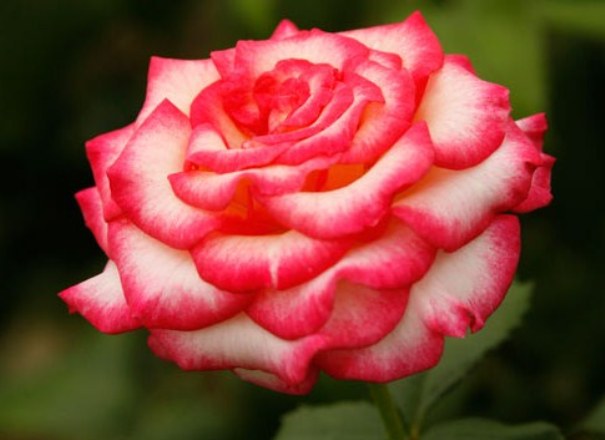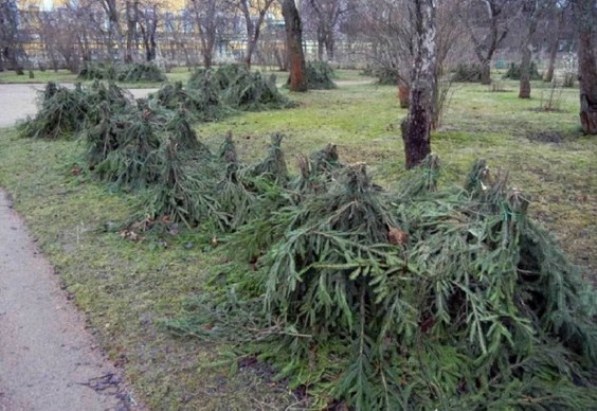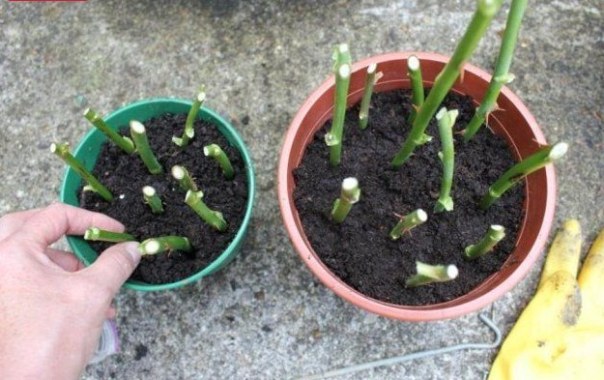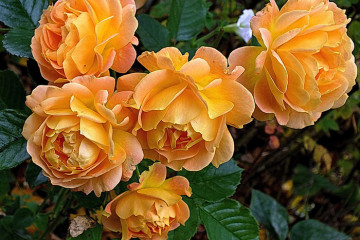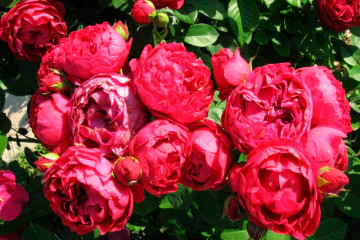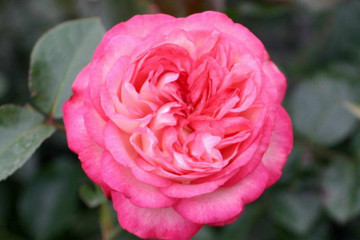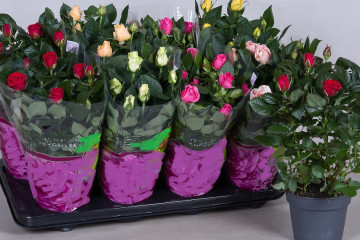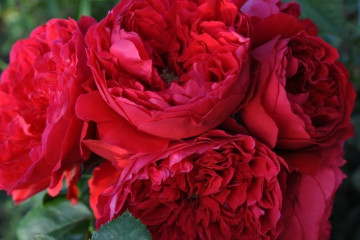Rose of Nostalgie (Nostalgie) - what is this standard variety
Content:
Roses have been used as adornments in gardens and in ceremonies for thousands of years. Due to the variety of shades and varieties, these flowers are popular in decor all over the world. One of the popular varieties is the Nostalgie variety.
Rose of Nostalgia
Also known as Nostalgia, Nostalgie, Nostalgia, La Garconne, TANeiglat. The last two names are used by breeders.
Hybrid tea rose Nostalgia includes the characteristics of tea varieties - abundant flowering, strong aroma and features of remontant roses - winter hardiness, disease resistance.
The flower is white with a red border around the edges of the petals. The border can be clearly defined or blurred. The bud is spherical, large, the size can be up to 10 cm.The height of the bush is up to 110 cm, the width is compact - up to 70 cm.
The benefits include:
- winter hardiness of the variety - the bush is able to withstand a drop in temperature to -29 degrees;
- disease resistance;
- immunity to temperature extremes;
- drought tolerance;
- flowering throughout the season.
Disadvantages:
- susceptibility to dampness;
- vulnerability to aphids.
In the design of the garden, the Nostalgie rose can be used both in single plantings and as a bright spot in a group design.
Growing a flower
The Nostalgia rose variety is planted in the ground with seedlings. A rose is planted in the ground in early May, much later than the snow melts and the soil warms up. You can also plant a seedling in early autumn, so that the plant has time to take root before the onset of frost.
A not very sunny place is suitable for planting, because in the presence of very bright light, the flowers will quickly fade. Also, you should not plant a plant in a lowland, without access to fresh air. Wet, shaded areas serve as a breeding ground for pests and putrefactive bacteria.
Nostalgie is a rose that loves light soil, with good breathability. If there is clay soil on the site, it is necessary to dilute it with humus, sand, perlite. Too light soil is burdened with peat, clay.
Planting procedure step by step
The step-by-step process of placing a new rose bush on the site looks like this:
- Dig a hole at least 60 cm deep.
- Fall asleep 10 cm with drainage.
- Then 10 cm with organic fertilizer.
- Another 10 cm with soil.
- They put a bush in the hole, spreading the roots.
- They are covered with soil, so that the point of growth of the roots is hidden underground, and the grafting site of the rose bush is 3 cm above the soil surface.
- Sprinkle abundantly with water.
Wait for a while. After the earth has shrunk, it is filled up.
Plant care
If the plant is in heavy soils, it is better to reduce watering, otherwise there is a risk of root rot. In sandstones, moisture quickly leaves, you need to control watering more often. Water the bush with warm water, at the rate of 2 buckets per bush once a week. At the end of flowering, watering is stopped.
The soil should be of low acidity - pH = 5.6-6.5. A strongly acidic medium is diluted with dolomite flour, and a weakly acidic medium is enriched with peat and manure. The rose is fed with nitrogen fertilizer in the spring and in the second half of summer with phosphorus and potassium. The soil is periodically loosened to give the roots an influx of fresh air.
The degree of pruning depends on what characteristics you want to get from the plant - abundant flowering or bush formation. When they want to see a profusely blooming rose on the site, they carry out medium pruning, leaving 5-7 buds on the branch.
To lighten the weight of the branches, shallow pruning is done. Cardinal branch removal is carried out during crown formation. The stem is cleared of young growth, which will spoil the decorative appearance of the bush.
The transplant can be carried out in the spring, the rules are the same as when planting.
Features of wintering a flower
They cover the plant after the onset of persistent frosts. Spruce branches are used as material.
In March, roses are opened slightly in the daytime. This is done to circulate fresh air and to prevent the kidneys from opening.
The standard view of the rose is covered over the entire height of the bush, without tilting it to the ground.
Blooming rose
A young hybrid tea seedling should not be loaded with flowers in the first year of life in the garden. You need to leave a few buds on the bush, let the fruit set. This will help produce more abundant flowering next year.
During flowering, care is the same as for other varieties of roses: you need to fertilize the seedling, monitor watering, remove dry branches and flowers. At the end of summer, prophylactic pruning of the bush is performed, diseased, damaged parts are removed.
What if it doesn't bloom? Among the reasons for poor flowering may be poor feeding of the rose, too abundant watering. It is also necessary to remove faded inflorescences, cut the crown.
Flower propagation
Propagate the rose by cuttings. The material is taken from strong branches, on which there were flowers. As a rule, preparation and planting of cuttings occurs at the end of summer.
The description of propagation by cuttings is similar to the rooting of other plants in this way. A strong branch with a flowering bud is cut from the bush. Cut it into several parts, leaving 2-3 buds. The branches are lowered for a day in a root stimulator, planted in trays with soil to a depth of up to half the length of the cutting. Cover the pot with plastic wrap and place in a warm, lit place for roots to germinate.
Among the common pests of the Nostalgia rose, in the first place is the aphid, which is attracted by the young growth of buds. Fight insects by spraying with insecticides. If the rose grows in damp, shaded areas, there is a risk of developing putrefactive bacteria. Treatment method - fungicide solutions.
The Nostalgia rose variety looks good on the site. The variegated color of the flower attracts attention from afar. Disease tolerance and compactness of the bush makes this variety desirable for cultivation by many gardeners.
